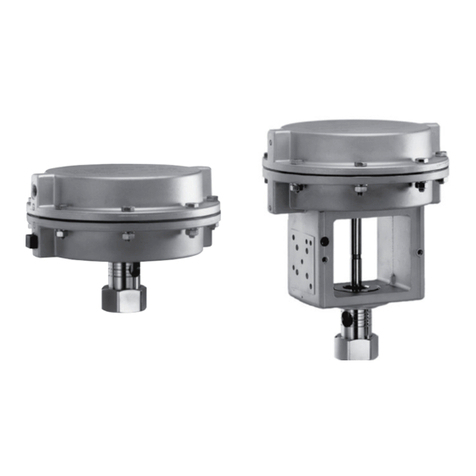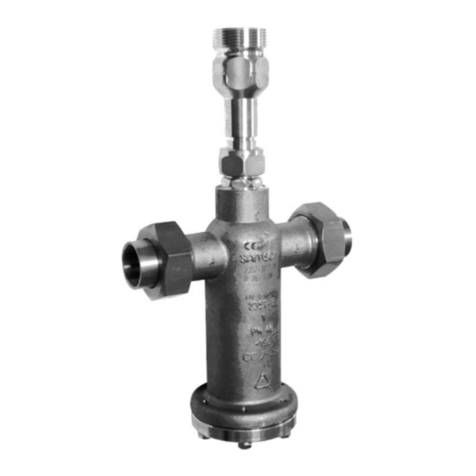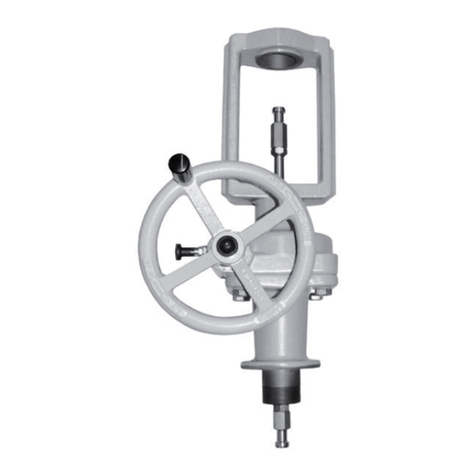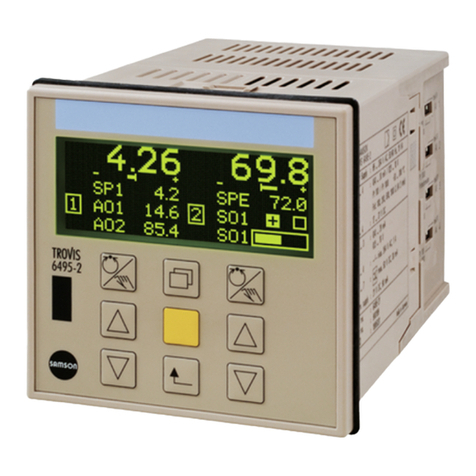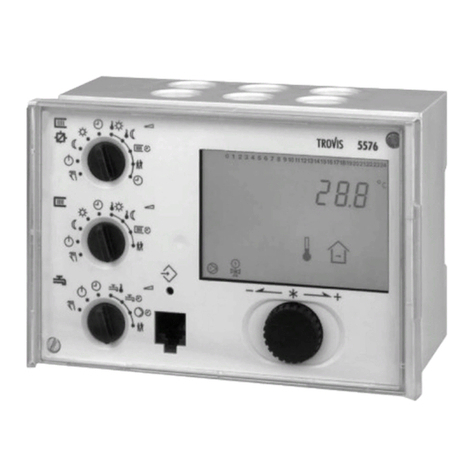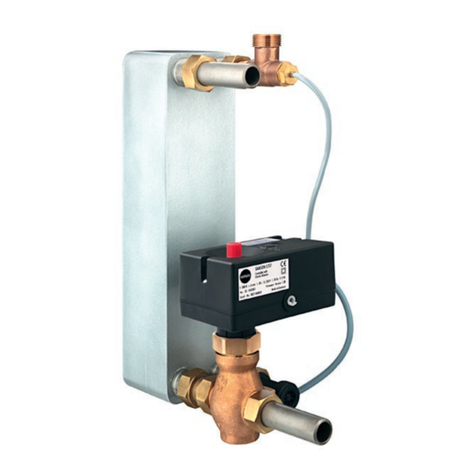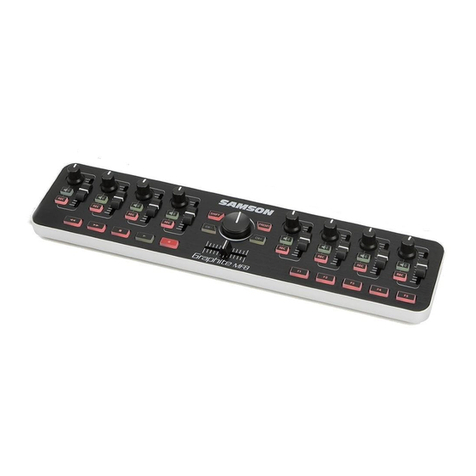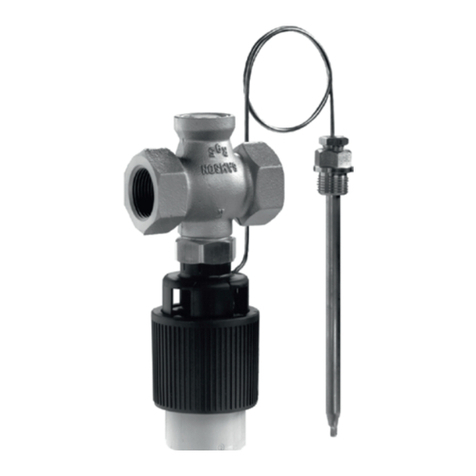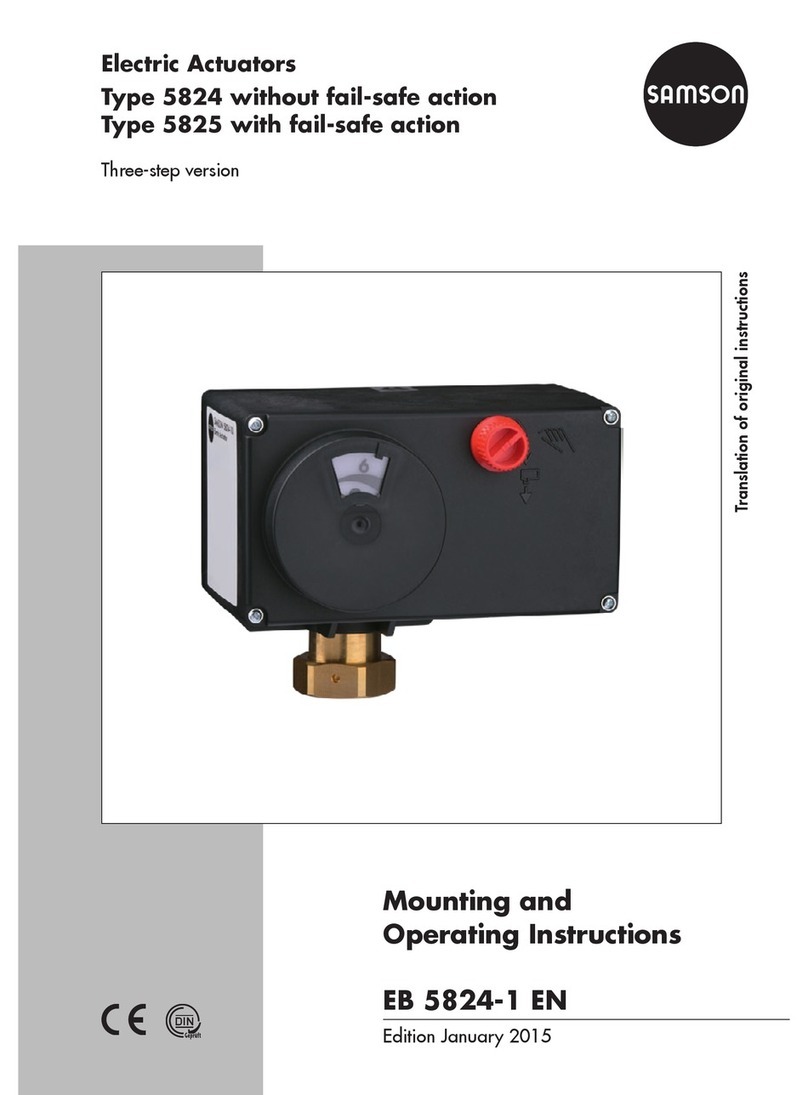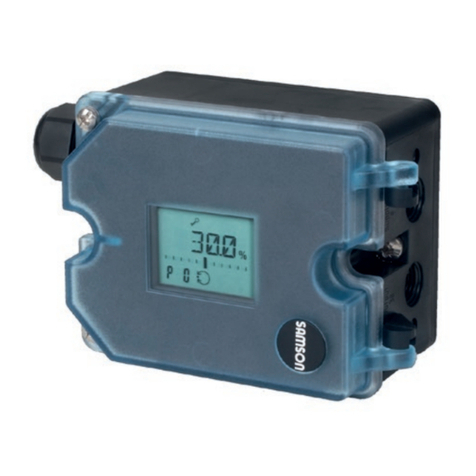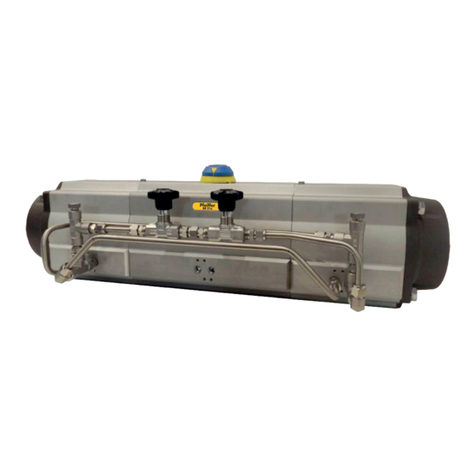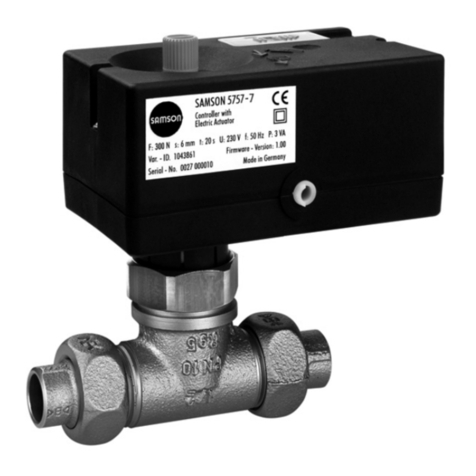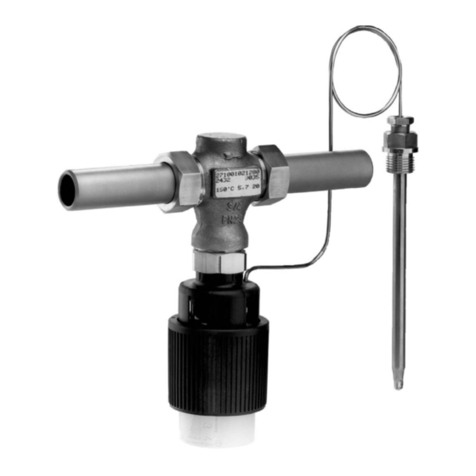
6 EB 2640 EN
Design and principle of operation
3 Design and principle of oper-
ation
TheType2371-10andType2371-11Re-
ducing Pressure Valves consist mainly of a
single-seatedanglevalvewithoperatingdia-
phragm and actuator housing.
ThesetpointoftheType2371-10isadjust-
ed pneumatically by an external air supply,
e.g. compressed air.
ThesetpointofType2371-11isadjusted
manually by tensioning the set point spring.
Themediumowsthroughthevalvebody(1)
inthedirectionindicatedbythearrow.The
positionoftheplug(3)determinestheow
rateacrosstheareareleasedbetweenplug
andvalveseat(2).Thevalvecloseswhenthe
downstreampressurep2rises above the ad-
justed set point. The resulting output pressure
p2dependsontheowrate.
Any medium escaping from the test connec-
tion(11)indicatesthattheoperatingdia-
phragm(4)maybeleakingorthedia-
phragm has ruptured. The test connection of
Type2371-10isconnectedtoaexiblepipe
elbowtodischargeanymediumescaping.
Type2371-11·Version with manual set
point adjustment (seealsosection5.2on
page11)
In the idle state, the valve is kept open by the
setpointsprings(7).Thevalvecloseswhen
the output pressure p2acting on the dia-
phragm(4)andtheresultingforceexceed
the force of the springs.
The set point is adjusted by an Allen key
(8mm),whichisinsertedthroughtheadjust-
mentopening(6.1)ontopofthehousing
ontothesetpointscrew(6).Theblanking
plugmustrstberemoved.Ifnecessary,the
setpointscrewcanbesecuredbythelock-
ingscrew(12)intheupperplugsectionto
preventthesetpointscrewfromloosening
due to vibrations, causing the set point to
change.
Thedisk(15)servesasabottomendstopto
protect the diaphragm from overload and to
prevent parts from falling apart inadvertently
whiletheregulatorisbeingdismantled.
Turningthesetpointscrewclockwisecauses
thespringplate(7.1)tomoveupwardsand
increases the spring force and the set point.
Turningthesetpointscrewcounterclockwise
relieves the spring tension and reduces the
set point.
Type2371-10·Version with pneumatic set
point adjustment (seealsosection5.2on
page11)
In the idle state, the valve is kept open by the
set point pressure pc(compressedair)ap-
plied as the control pressure.
When the force created by the output pres-
sure p2acting on the diaphragm exceeds the
force resulting from the set point pressure pc,
theplug(3)movestowardstheseat(2),clos-
ing the passage. In this case, the ratio be-
tweenp1and pcis not necessarily 1:1.
As the output pressure p2drops, the resulting
force reduces again. The valve is opened
againwhenthepressurefallsbelowtheset
point pressure pc.

